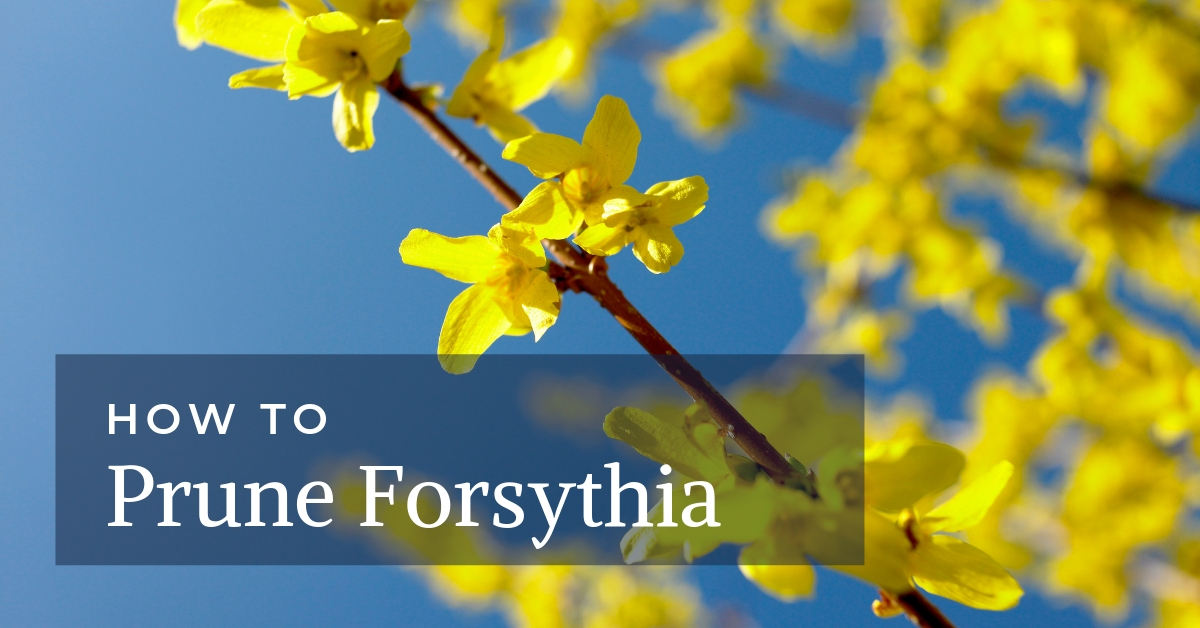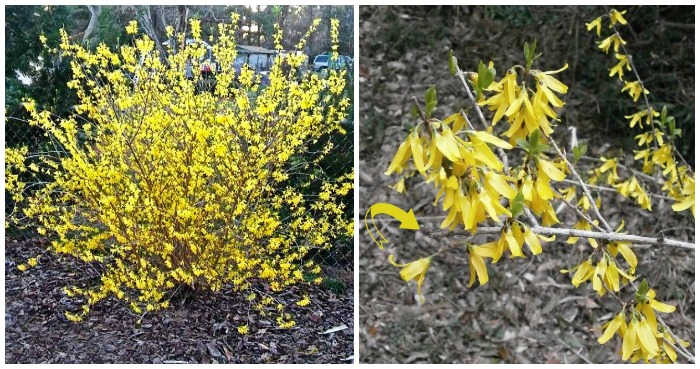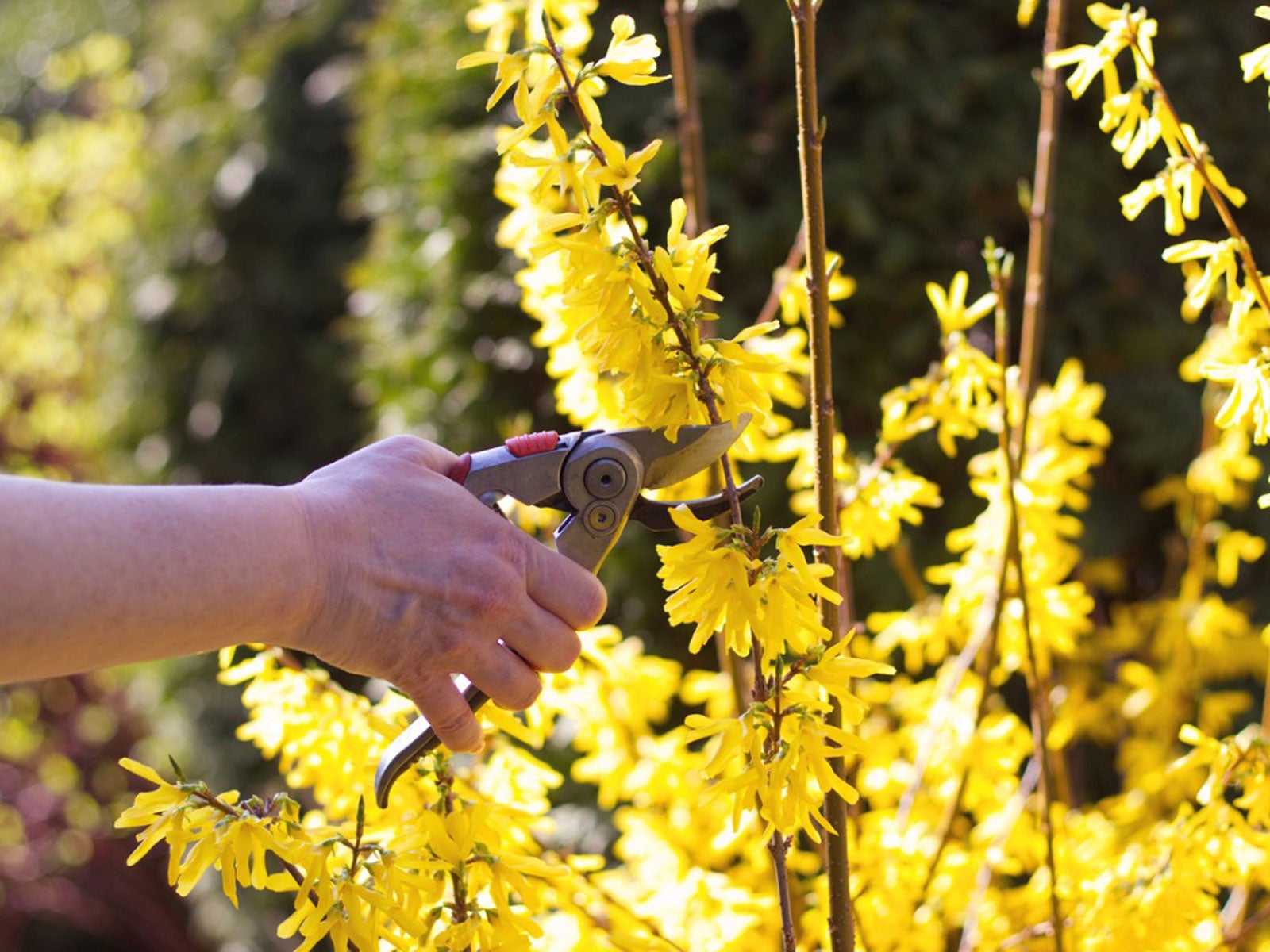Why Prune Your Forsythia Bush?
Pruning forsythia bushes is an essential part of their maintenance, as it helps maintain their shape, promotes healthy growth, and encourages blooming. Regular pruning can also prevent overgrowth, reduce the risk of disease, and keep the plant looking its best. By pruning your forsythia bush, you can control its size, shape, and appearance, making it a valuable addition to your garden or landscape.
Forsythia bushes are known for their vibrant yellow flowers, which bloom in early spring. However, if left unpruned, they can become leggy and overgrown, losing their natural shape and beauty. Pruning helps to maintain the plant’s natural shape, encourages new growth, and promotes blooming. It also helps to remove dead or damaged branches, which can harbor disease and pests.
Pruning forsythia bushes is also important for their overall health. By removing dead or damaged branches, you can prevent the spread of disease and encourage healthy growth. Pruning also helps to improve air circulation, reduce humidity, and promote healthy growth. This can help to prevent common problems like powdery mildew and leaf spot.
So, how do you trim a forsythia bush? The first step is to understand the importance of pruning and how it can benefit your plant. By pruning your forsythia bush regularly, you can keep it looking its best, promote healthy growth, and encourage blooming. In the next section, we’ll discuss when to prune your forsythia bush, including the ideal season and timing.
When to Prune Your Forsythia Bush
Pruning forsythia bushes at the right time is crucial for their health and growth. The ideal time to prune forsythia bushes is immediately after they finish blooming in the spring. This allows you to remove any dead or damaged branches that may have been hidden by the flowers, and also helps to promote new growth and blooming for the next year.
Pruning in the spring also helps to minimize stress on the plant, as it is less likely to be actively growing during this time. This reduces the risk of disease and pests, and also helps to prevent the spread of disease. Additionally, pruning in the spring allows you to shape the plant and control its size, making it easier to maintain and care for.
It’s also important to avoid pruning forsythia bushes in the fall or winter, as this can cause new growth to emerge, which may not have time to harden off before the first frost. This can lead to damage or death of the new growth, and can also make the plant more susceptible to disease and pests.
So, how do you trim a forsythia bush? The key is to prune at the right time, using the right techniques and tools. By pruning your forsythia bush in the spring, you can promote healthy growth, encourage blooming, and maintain its shape and size. In the next section, we’ll discuss the necessary tools for pruning forsythia bushes, including pruning shears, loppers, and gloves.
Gathering the Right Tools for the Job
Before you start pruning your forsythia bush, it’s essential to gather the right tools for the job. The right tools will make the pruning process easier, safer, and more effective. Here are the necessary tools you’ll need to prune your forsythia bush:
Pruning shears: These are the most critical tool for pruning forsythia bushes. Look for sharp, clean pruning shears that can cut through branches up to 1 inch in diameter. Dull pruning shears can crush the branches, leaving them vulnerable to disease and pests.
Loppers: These are long-handled pruning shears that can cut through thicker branches. They’re ideal for pruning larger forsythia bushes or for cutting through dead or damaged branches.
Gloves: Pruning gloves will protect your hands from thorns, sap, and other debris. Look for gloves that are waterproof and have a good grip to prevent dropping your pruning shears.
Other tools: Depending on the size and complexity of your forsythia bush, you may also need other tools such as a pruning saw, hedge clippers, or a ladder.
Using the right tools is crucial for pruning forsythia bushes effectively. Sharp, clean tools will help prevent the spread of disease and pests, while also making the pruning process easier and safer. In the next section, we’ll provide a step-by-step guide on how to prune forsythia bushes, including how to remove dead or damaged branches, shape the plant, and thin out overgrown areas.
Step-by-Step Pruning Instructions
Now that you have the right tools and know when to prune your forsythia bush, it’s time to learn how to prune it. Here’s a step-by-step guide on how to prune forsythia bushes:
Step 1: Remove Dead or Damaged Branches
Start by removing any dead or damaged branches from the plant. Cut the branches off at the base, making sure to make a clean cut just above a growth node. This will help the plant heal quickly and reduce the risk of disease.
Step 2: Shape the Plant
Next, shape the plant to maintain its natural shape and promote healthy growth. Cut back any branches that are growing outside of the plant’s natural shape, and trim back any branches that are crossing or rubbing against each other.
Step 3: Thin Out Overgrown Areas
Thin out any overgrown areas of the plant to allow for good air circulation and sunlight penetration. Cut back any branches that are growing too densely, and remove any weak or spindly growth.
Step 4: Make Clean Cuts
When making cuts, make sure to use sharp, clean pruning shears and make clean cuts just above a growth node. This will help the plant heal quickly and reduce the risk of disease.
Step 5: Check for Pests and Diseases
Finally, check the plant for any pests or diseases and take action if necessary. Prune out any infected or infested branches, and treat the plant with insecticidal soap or fungicide if necessary.
By following these steps, you can prune your forsythia bush effectively and promote healthy growth and blooming. Remember to prune your forsythia bush regularly to maintain its shape and promote healthy growth.
Pruning Techniques for Different Types of Forsythia Bushes
Forsythia bushes come in a variety of shapes and sizes, and each type has its own unique pruning requirements. Here are some tips on how to prune different types of forsythia bushes:
Compact Forsythia Bushes
Compact forsythia bushes are ideal for small gardens or containers. To prune compact forsythia bushes, simply trim back any branches that are growing outside of the plant’s natural shape. This will help maintain the plant’s compact size and promote healthy growth.
Dwarf Forsythia Bushes
Dwarf forsythia bushes are similar to compact forsythia bushes, but they are slightly larger. To prune dwarf forsythia bushes, trim back any branches that are growing outside of the plant’s natural shape, and thin out any overgrown areas to allow for good air circulation and sunlight penetration.
Weeping Forsythia Bushes
Weeping forsythia bushes have long, trailing branches that require regular pruning to maintain their shape. To prune weeping forsythia bushes, trim back any branches that are growing outside of the plant’s natural shape, and thin out any overgrown areas to allow for good air circulation and sunlight penetration.
By pruning your forsythia bush regularly, you can maintain its shape, promote healthy growth, and encourage blooming. Remember to prune your forsythia bush at the right time, using the right techniques and tools, to ensure the best results.
Pruning forsythia bushes is an art that requires patience, skill, and practice. By following these tips and techniques, you can master the art of pruning and keep your forsythia bush looking its best. In the next section, we’ll discuss common mistakes to avoid when pruning forsythia bushes.
Common Mistakes to Avoid When Pruning Forsythia Bushes
Pruning forsythia bushes can be a delicate process, and making mistakes can harm the plant. Here are some common mistakes to avoid when pruning forsythia bushes:
Over-Pruning
Over-pruning is one of the most common mistakes people make when pruning forsythia bushes. Pruning too much of the plant can cause stress, leading to disease and pest problems. To avoid over-pruning, prune only what is necessary to maintain the plant’s shape and promote healthy growth.
Pruning at the Wrong Time
Pruning forsythia bushes at the wrong time can also cause problems. Pruning in the fall or winter can cause new growth to emerge, which may not have time to harden off before the first frost. Pruning in the spring, after the plant has finished blooming, is usually the best time.
Using Dull Tools
Using dull tools can also cause problems when pruning forsythia bushes. Dull tools can crush the branches, leaving them vulnerable to disease and pests. To avoid this, use sharp, clean pruning shears and loppers.
Not Making Clean Cuts
Not making clean cuts can also cause problems when pruning forsythia bushes. Clean cuts help the plant heal quickly and reduce the risk of disease. To make clean cuts, use sharp, clean pruning shears and loppers, and cut just above a growth node.
By avoiding these common mistakes, you can prune your forsythia bush effectively and promote healthy growth and blooming. Remember to prune your forsythia bush regularly, using the right techniques and tools, to ensure the best results.
Aftercare and Maintenance
After pruning your forsythia bush, it’s essential to provide proper aftercare and maintenance to promote healthy growth and prevent disease. Here are some tips on how to care for your forsythia bush after pruning:
Watering
Water your forsythia bush regularly, especially during the first year after pruning. Make sure the soil is moist but not waterlogged, as this can lead to root rot and other problems.
Fertilizing
Fertilize your forsythia bush in the spring, using a balanced fertilizer that contains equal amounts of nitrogen, phosphorus, and potassium. This will help promote healthy growth and blooming.
Mulching
Mulch around the base of your forsythia bush to retain moisture, suppress weeds, and regulate soil temperature. Use a layer of 2-3 inches of organic mulch, such as wood chips or bark.
Pest and Disease Control
Keep an eye out for pests and diseases, such as aphids, spider mites, and powdery mildew. Use organic or chemical controls as needed to prevent infestations and infections.
By following these aftercare and maintenance tips, you can help your forsythia bush recover from pruning and promote healthy growth and blooming. Remember to prune your forsythia bush regularly to maintain its shape and promote healthy growth.
Tips for Pruning Forsythia Bushes in Different Climates
Forsythia bushes can be grown in a variety of climates, but the pruning techniques may need to be adjusted depending on the specific climate conditions. Here are some tips on how to prune forsythia bushes in different climates:
Hot Climates
In hot climates, forsythia bushes may require more frequent pruning to maintain their shape and promote healthy growth. Prune the plant in the spring, after it has finished blooming, and again in the summer to remove any dead or damaged branches.
Cold Climates
In cold climates, forsythia bushes may require less frequent pruning to prevent damage from cold temperatures. Prune the plant in the spring, after it has finished blooming, and avoid pruning in the fall or winter to prevent new growth from emerging.
Humid Climates
In humid climates, forsythia bushes may be more susceptible to disease and pests. Prune the plant regularly to maintain its shape and promote healthy growth, and use fungicides or insecticides as needed to prevent infestations.
By adjusting your pruning techniques to accommodate different climate conditions, you can help your forsythia bush thrive and maintain its shape and promote healthy growth. Remember to prune your forsythia bush regularly, using the right techniques and tools, to ensure the best results.






:max_bytes(150000):strip_icc()/forsythia-bushes-plants-that-herald-spring-2131177-01-183338a49835474cb803025d7a769f79.jpg)


